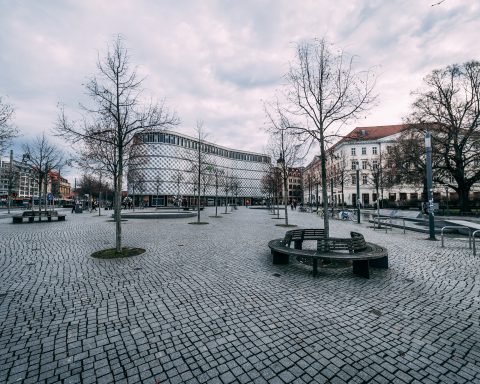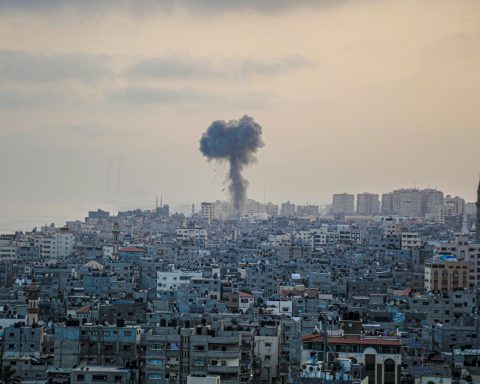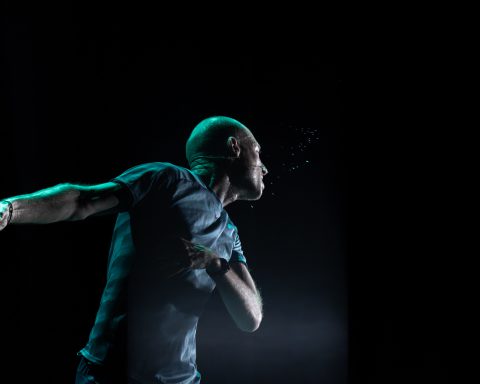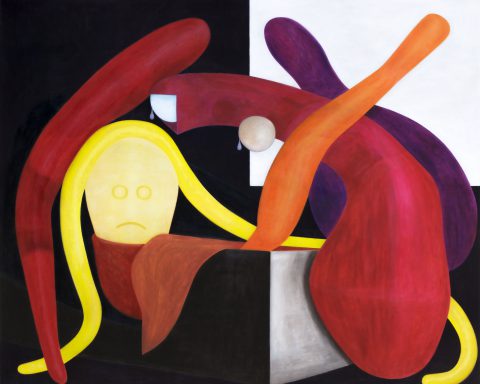I’ve seen differing info on how long one looks at a contemporary artwork in a museum setting. One source said 17 seconds, while another said 5 seconds. Wow! That’s not much time. I guess it’s more than they would get on instagram, but still, when you think of all that has gone into the creation of a piece, that is disappointing.
Why is this? Is it because contemporary art is pretentious and aimed at the elite? Is it because, at first glance, some of it appears to lack skill? Naturally, a first glance is all you get in such a short time.
Most contemporary art is not art for art’s sake. It has a message.
That message could be as simple as giving you a new physical experience. It could be a commentary on the art world itself. It could bring to light a situation you might not hear about in the media. The message could be about personal experience or question socio-political ideologies.
Part of the role of a curator is to create a show that keeps you in the piece as long as you need to be there to understand it. One of the ways this can be done by making sure it is in the right venue. The venue could complement or contrast the work in theme or material.
It’s not enough to stick things in a space, they have to flow or stick, depending on the desired outcome. There are so many things to consider in preparing. Along with graphic design and marketing, it’s important to know what other events of similar scale are going on in town.
Artist’s talks, discussion panels, film screenings, etc often give people more insight into the theme. And, of course, the curator has to create press releases and teasers to get people there in the first place. These are a few of the items on a curator’s to-do list.
We continue our 7 part series written by participants in this year’s edition of the Konstfack CuratorLab based in Stockholm, Sweden. They recently went to the 11th Gwangju Biennale 2016, The Eighth Climate (What does art do?) in Korea. The texts originally appeared on their website.
intro by maeshelle west-davies
I feel like a mobile partisan artist
Babi Badalov’s Car-Pet-Alism installation spreads all the way through the corridor leading towards the 2nd floor of the 11th Gwangju Biennale main exhibition space. Hundreds of multi-sized paper and fabric cut outs, photos, personal objects, intelligently manipulated words and phrases with strong texture and meaning intermix and interlock on the wall surface to create an extended version of Badalov’s visual poems.
The artist in his very own humoristic, laconic, poignant and emotionally charged style dynamically and vividly brings to the fore crucial socio-political and economic issues related to migration, censorship, discrimination, fascism, poverty, consumerism, among other topics. He openly criticizes the suppressive attitude of our globalized society. As the viewer walks by the installation, they enter an environment of active protest and engage with a visual documentation account full of the contradictory aspects of the contemporary everyday life.
Babi Badalov was born in Lerik, Azerbaijan. Today he lives and works in Paris. In 2011, a turning point in his personal and artistic life, he was finally granted political asylum in France after more than twenty years of wandering from one European city to the next. He currently participates in numerous exhibitions and projects worldwide.
In his recent large scale, site-specific wall composition, painting, drawing and collage techniques are used to mix languages both in Cyrillic and arabesque-like lettering. The political and commercial mingle with colorful pictures to create a unique visual poem.
I met Babi Badalov at the Opening of the 11th Gwangju Biennale and shared a brief and overall discussion on his latest artistic practices, his artistic and personal journey beginning with his early years in his Azerbaijani hometown, all the way up to today.
Domna Gounari: You were born and grew up in Lerik, Azerbaijan, of a rather conservative and restricted background; what is your earliest memory of creating art?
Babi Badalov: I was born and grew up in Lerik, a very remote Azerbaijani village close to the Iranian border, to a very traditional poor fanatical Shiite Muslim family during the U.S.S.R. era. At that time, people were not even permitted to practice their religious beliefs, as imposed by the restricted communist regime. However, since my village was quite far from the city, we could escape permanent surveillance and practice our Muslim rituals.
I remember my mother taking me to Shia Muslim gatherings during the Ashura, a three day mourning ceremony in memory of martyr imam Hussein, grandson of Muhammad. It was in the month of Muharram and everybody had to dress in black and look really sad, even cry out loud in order to commemorate the martyrdom of Hussein at the Battle of Karbala.
Although my parents had a very negative stance towards my choice to be an artist, I refused to follow their orders and tried hard to search for my artistic identity even though I had to differentiate myself from my family and the community.
I still remember that I did feel different from everybody else.
And since I always wanted to be an artist, to be different was not a deterrent at all for me.
DG: Were you involved in the alternative Russian art scene in the 1980s?
BB: I finished the State Art College in Baku, capital of Azerbaijan, and right afterwards, I joined the army as any Soviet man over 18. I served for two years at a military camp near Moscow and once I was dismissed, I decided to move to Saint Petersburg. At the time I considered it my dream city. To me, it was like being in Paris.
When in Saint Petersburg, I used to work mostly on black ink drawing compositions and I came to meet many underground (non-official) artists. I became part of the New Artist group, the avant-garde group of artists who used to organize projects in illegally occupied buildings and places around the city in order to go beyond and practice a different art, against the official socialist realist one. At the same time, I began to live my new liberal life, and I was eager to build on and establish my own artistic language and form of artistic expression.

DG: In 2007 you took part in the 1st Thessaloniki Biennale of Contemporary Art (Heterotopias, beholders of other places) by presenting Toys for Adults, an installation made of fabric dolls evoking associations of violence and absurdity. Could you expand upon the concept of that specific artistic practice from almost ten years ago?
BB: In 2007, I claimed political asylum in the UK since I was in danger both in my country and in Saint Petersburg because of my progressive and provocative artistic orientation, my political opinions and being open about my personal life. I was put in detention immediately and spent almost two years being sent from one detention center to another throughout the UK. I lived there under miserable and terrifying conditions and I’ve experienced the discrimination, injustice and anti-democratic system imposed on all immigrants.
That same year, the installation Toys for Adults was about to be presented at the 1st Thessaloniki Biennale and I was trapped in a fugitive camp in Cardiff, Wales, along with many other activists.
The authorities refused me travel to Greece.
I had no chance to be present for its installation though it was really important, almost part of my work, to be there and prepare it according to my philosophical and activist engagements.
An essential part of that specific artwork was the process which I used to stuff those dolls with plastic bags as a gesture emphasizing the lack of any protection of nature. Today I still have some dolls and I am willing to exhibit them in the future, but as part of and in relation to my latest artistic practice.

DG: Your project Car-Pet-Alism, a commission by the 11th Gwangju Biennale 2016, a large scale installation, a monumental collage of color magazine, newspaper, wallpaper and textile, photographs, drawings and texts, is one of the most prominent and provocative works of the exhibition. Could you describe the spiritual, aesthetic and ideological processes behind this specific project and the importance the material has for you? What is for you this word-slogan-pun practice? How did you actually come up with drawing visual poetry?
BB: Car-Pet-Alism represents my visual diaries, since it reflects my everyday life and forms the body of documentation of my recent, almost new personal experiences within a liberal and occidental European society, namely that of Paris, away from the traumatic past. Focusing on the latest cultural confrontations in Europe and the political multiculturalism, I feel myself as a mobile partisan artist who uses both culture and language as the strongest alternatives against any nationalistic, homophobic, fundamentalist movement.
In my recent works, the visualized version of the alphabet and the slogan drawings represent my transparent artistic manifestations. Material also plays an important role in my work, since paper is perishable by nature and that conforms with the fragility of human existence and its vulnerability to external forces. Art is totally integrated in my life and the project “Car-Pet-Alism” manifests my artistic duty and mission of resistance against capitalism and consumerism.
DG: To conclude, having the experience of participating in museum projects and biennials around the world, could you comment on the importance and the role of such exhibitions and on your presence and membership in the international art scene?
BB: As I said, I feel like a partisan artist who has employed human cultural heritage as the strongest alternative in order to fight for a multicultural future of humanity.
written by Domna Gounari
Domna Gounari was born in Thessaloniki, Greece, in 1975. She studied Ancient History and Archaeology (University of Reading, U.K., 2000) and holds an MA in Managing Archaeological projects (Birkbeck College, University of London, U.K., 2001). She is currently a PhD candidate at the National and Kapodistrian University of Athens, Greece, at the Department of History and Archaeology. Since 2007 she has worked as a curator of contemporary art exhibitions, projects, workshops and exhibition catalogues at the State Museum of Contemporary Art in Thessaloniki. Her texts have been published in solo and group exhibition catalogues and periodicals.









